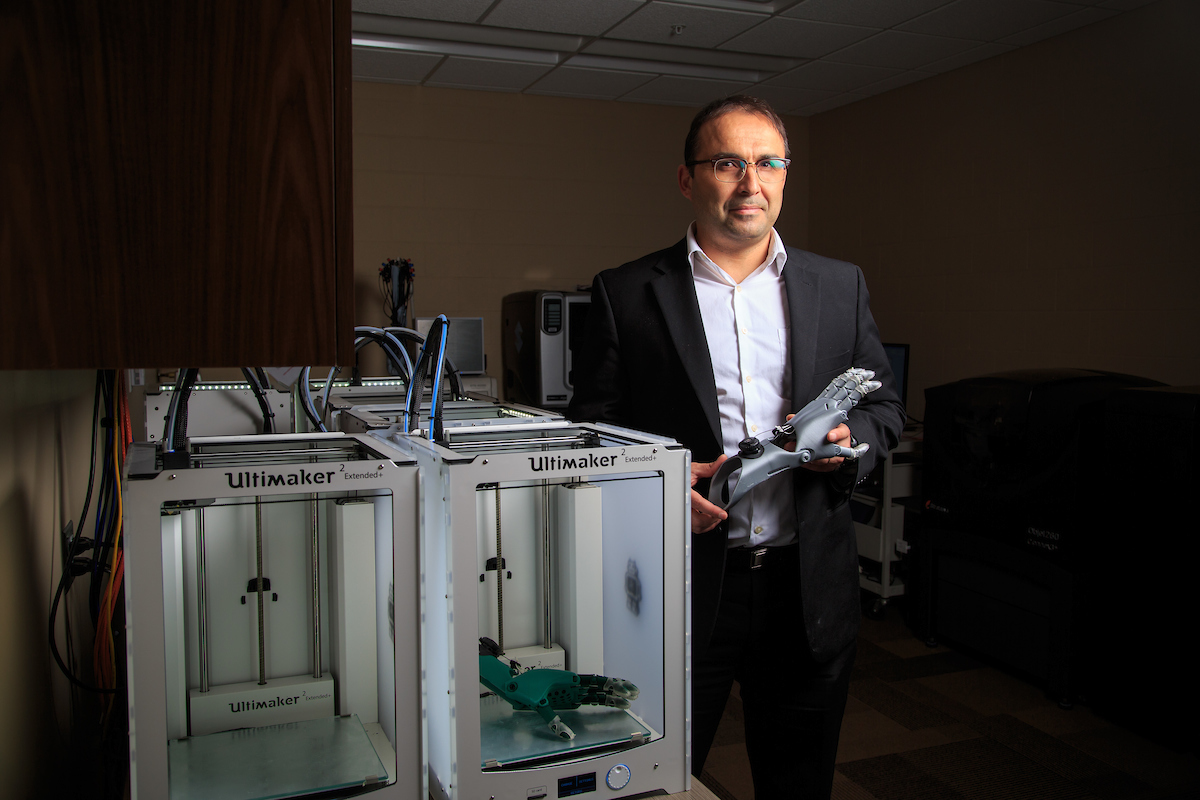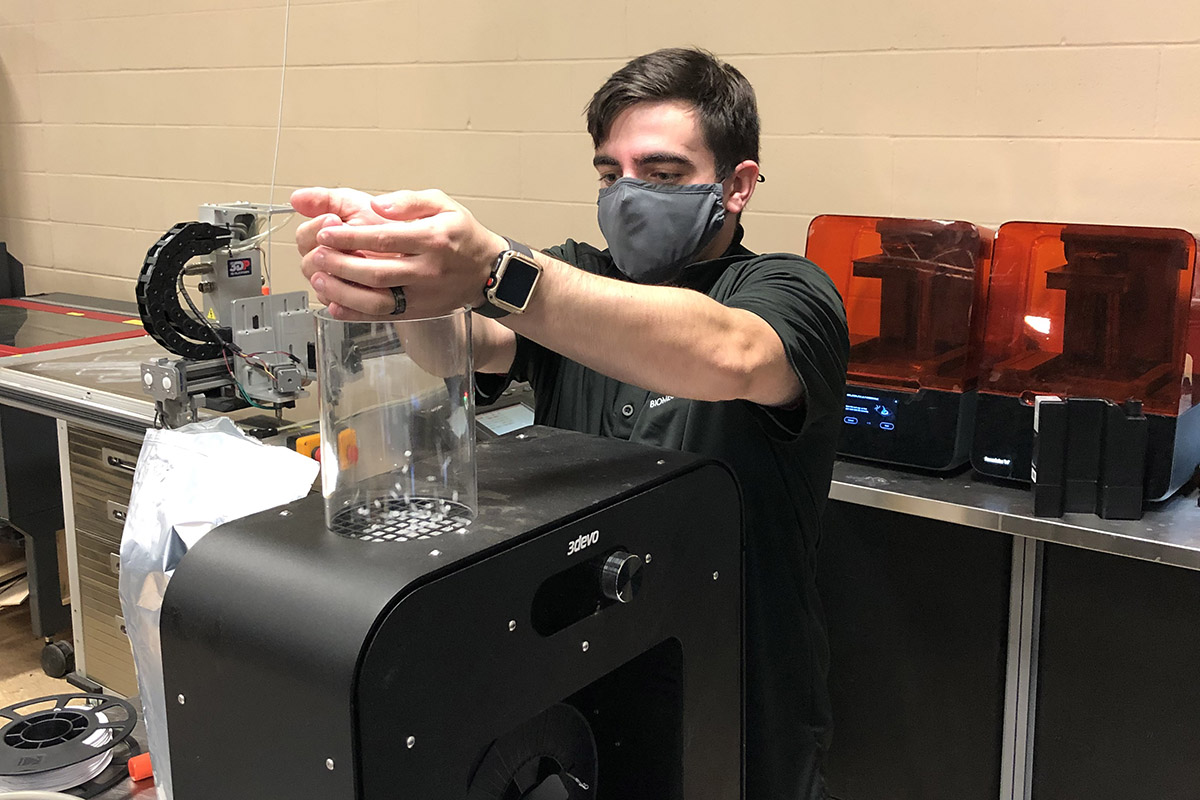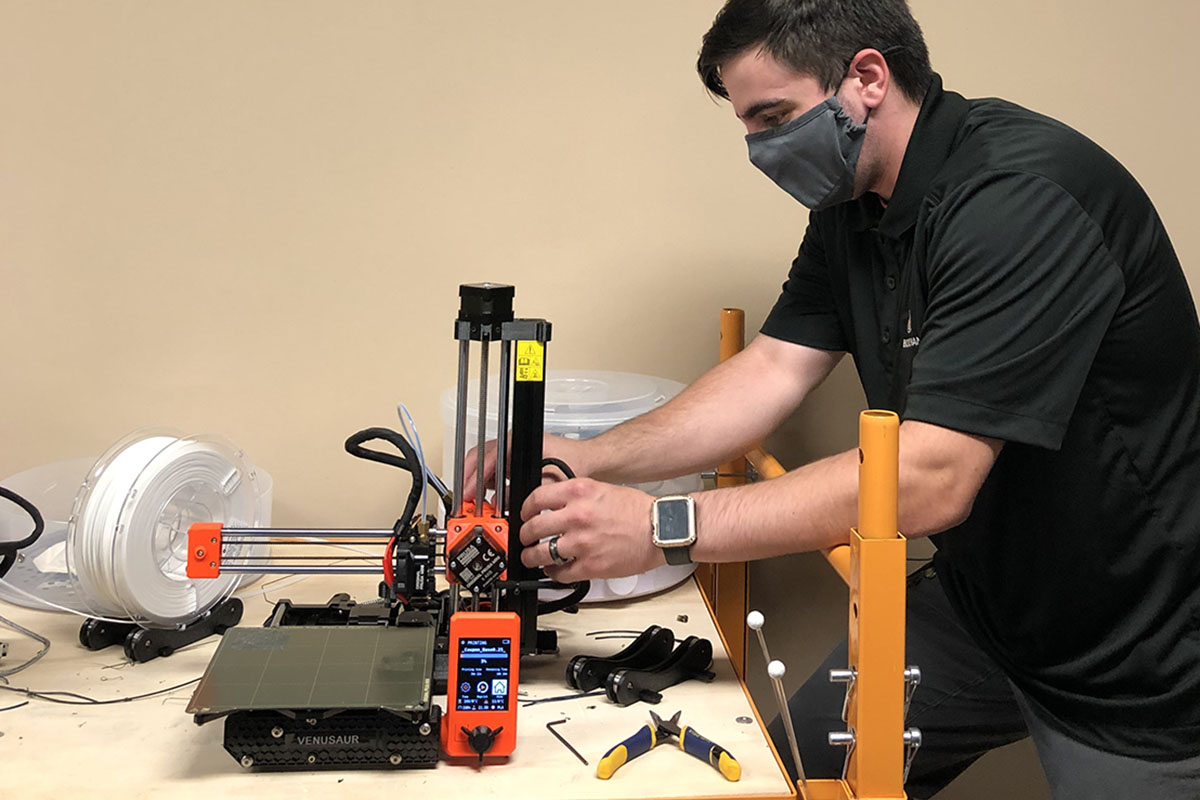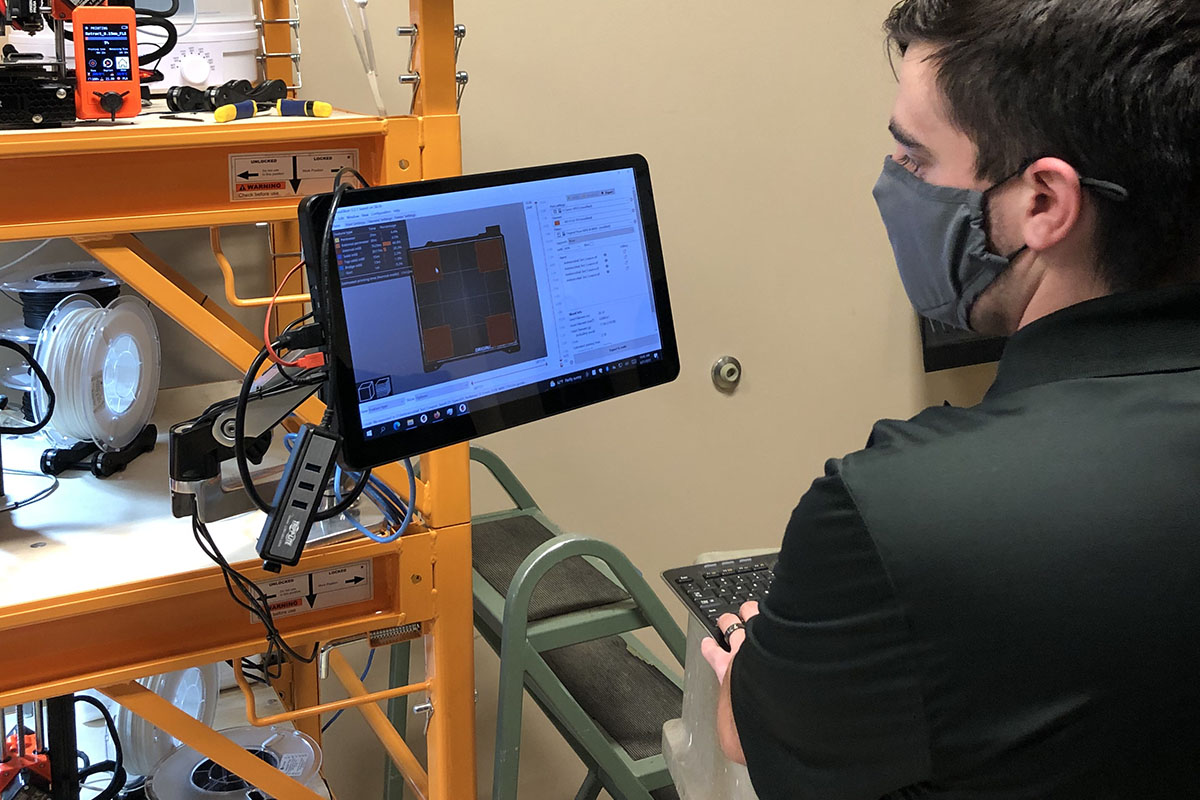UNO Biomechanics and Copper3D Develop Antimicrobial, Recyclable Materials for NASA
- contact: College of Education, Health, and Human Sciences
- email: unocehhs@unomaha.edu
Researchers from the University of Nebraska at Omaha (UNO) will soon aid in the development and testing of new recyclable and antimicrobial materials for in-space manufacturing through a new NASA research grant.
The $1.125M NASA EPSCoR grant is a collaboration between UNO Biomechanics and Chilean company Copper3D, a pioneer and global leader in antimicrobial materials and applications for the 3D printing industry.
Director of NASA Nebraska EPSCoR, Scott Tarry Ph.D., and his office will provide administrative support for the project. The scientific team will be led by Jorge Zuniga Ph.D., UNO associate professor and co-director of the Biomechanics Rehabilitation and Manufacturing Initiative (BRMI).
"In space, astronauts on long-term missions suffer from immune system dysregulation due to confinement, exposure to high radiation, and disturbed sleep cycles. Bacteria and viruses become more resistant in microgravity, which adds to the previous factor, making space missions of more than six months very risky," explained Zuniga.
"It is extremely important to have new materials, tools, medical devices, and everyday objects with antimicrobial properties in space to prevent infection and to help keep astronauts healthy."
Through this grant funding, two new antimicrobial materials will be developed by Copper3D, then manufactured and tested for safety on Earth in a replica of the International Space Station's (ISS) Additive Manufacturing Facility. Once the safety of the material has been validated, the team will prepare the launch, operation, and return-to-Earth activities.
UNO Biomechanics will work with 3D printer manufacturer Made in Space and NASA to create the test coupons and printed representations of the final in-space devices, as well as conduct post testing on Earth of the antimicrobial effectiveness.
"The current logistical model relies on continual resupply missions from Earth to the ISS, which is unsustainable for long duration space missions," said Alex Blanchard, project lead for In-Space Manufacturing Recycle and Reuse, NASA Marshall Space Flight Center in Huntsville, Alabama. "Recycling and reuse could potentially reduce mass, increase mission flexibility, provide a path towards sustainable manufacturing, and produce on-demand spares."
This is particularly important for the sparing of medical devices, which are often single use, according to Blanchard.
"If we can reprocess the same material several times for different applications through several recycling and re-manufacturing processes, without significantly losing its antimicrobial or physical properties, we will reduce weight, time, and the number of resupply missions," Blanchard continued. "This would make future space missions safer and more feasible."
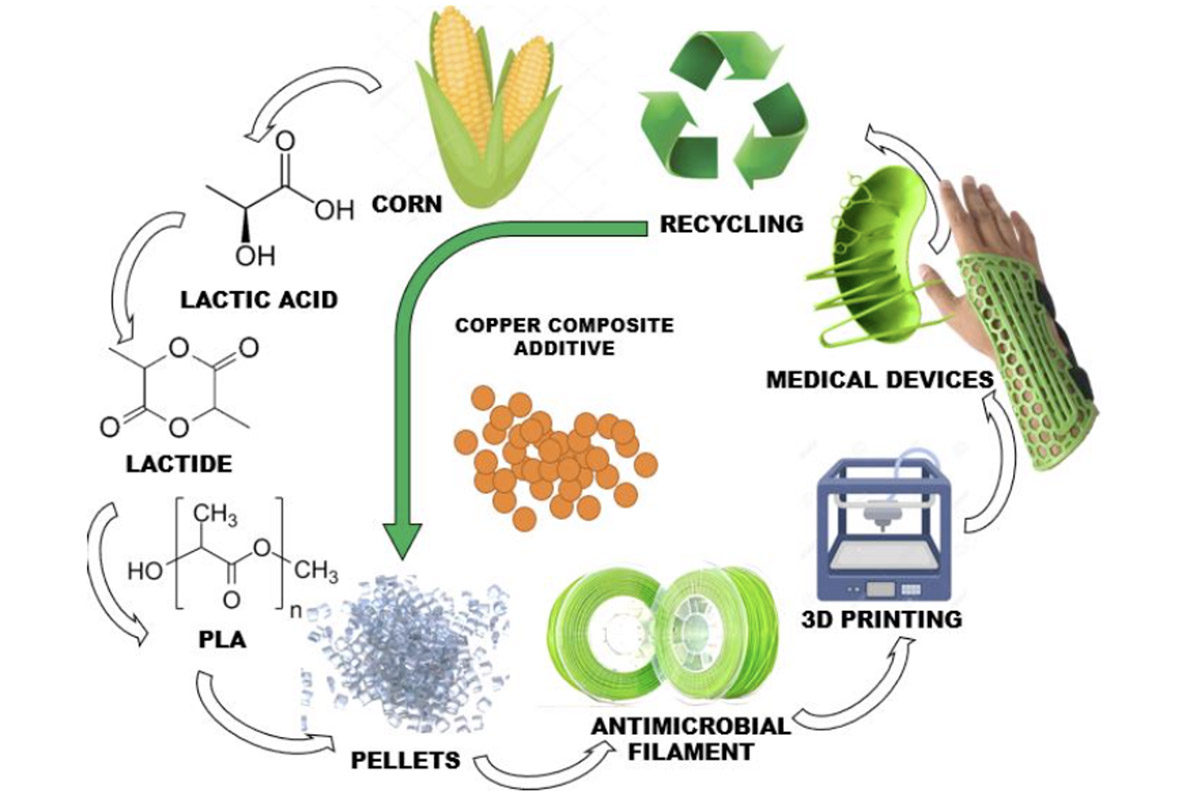
Copper3D's recycling process
The collaboration between UNO and Copper3D will build on previous research that began in 2018. Initial grant funding allowed testing of antimicrobial materials for 3D printing in microgravity, or low gravity. A second grant awarded in 2019 evaluated the feasibility of 3D printing a set of medical devices under Zero-G conditions.
In addition to solving unique problems in extreme environments such as space exploration bases, Copper3D collaborates with companies and institutions through CopperX, their Open Innovation Unit. A recent CopperX project provided copper ion exchangers—a technology used to process pathogen-free drinking water—to developing countries with poor access to clean water.
"For our team at Copper3D, it is tremendously relevant and exciting to see how antimicrobial 3D printing technology, which we pioneered in 2017, has quickly found multiple areas of impact and development of solutions," said Daniel Martínez, Co-Founder and Director of Innovation at Copper3D.
"We sincerely believe that Copper3D technology can prevent infections and save lives on a global scale, and we are about to prove that on an interplanetary scale as well."
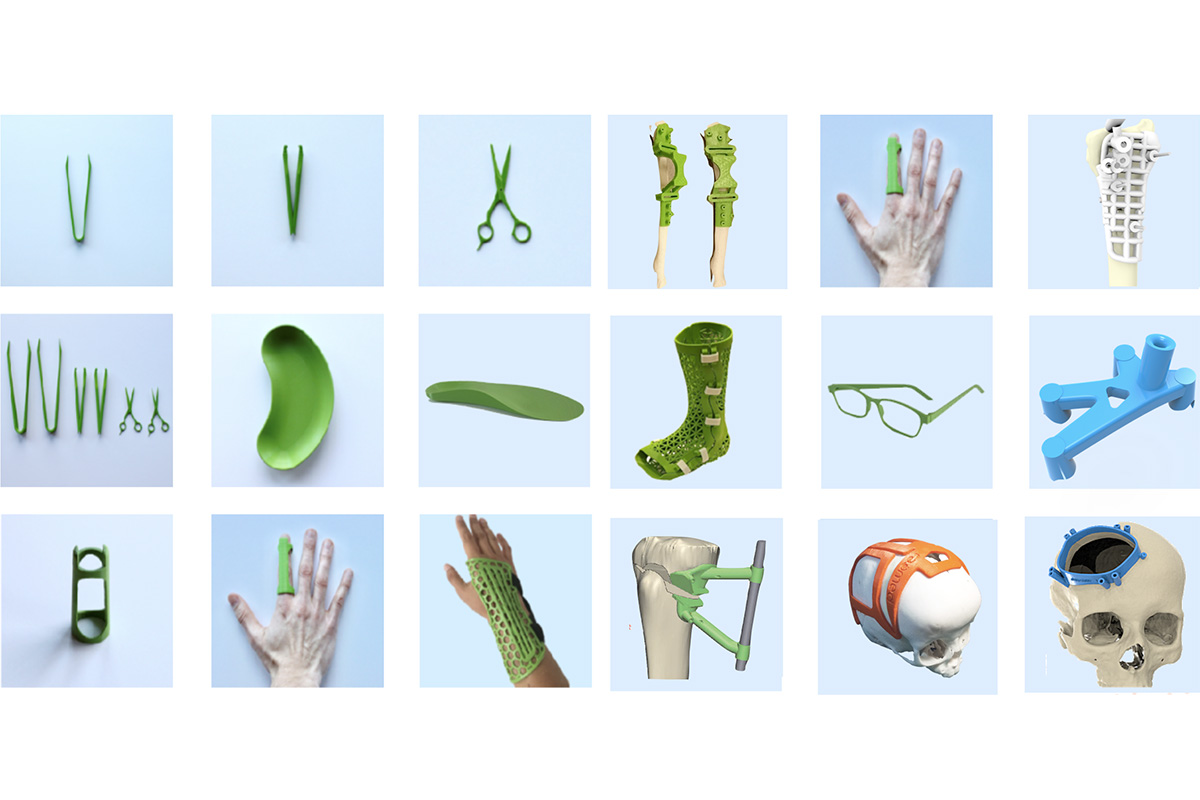
Antimicrobial material developed by Copper3D is used in many biomedical applications
